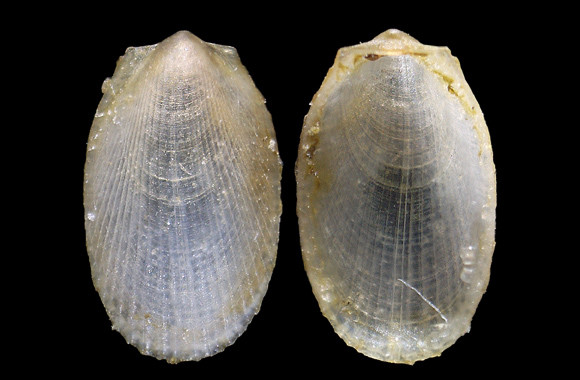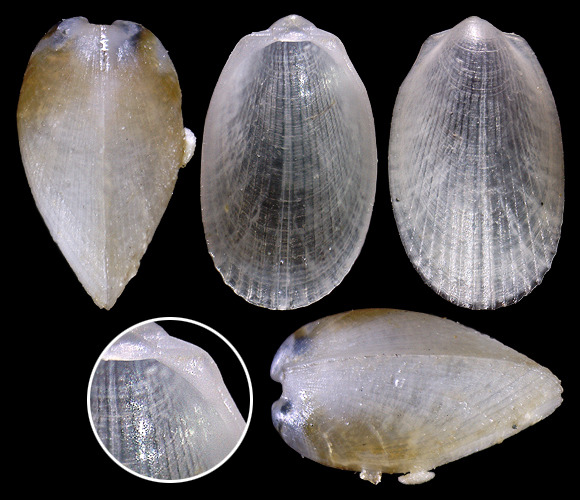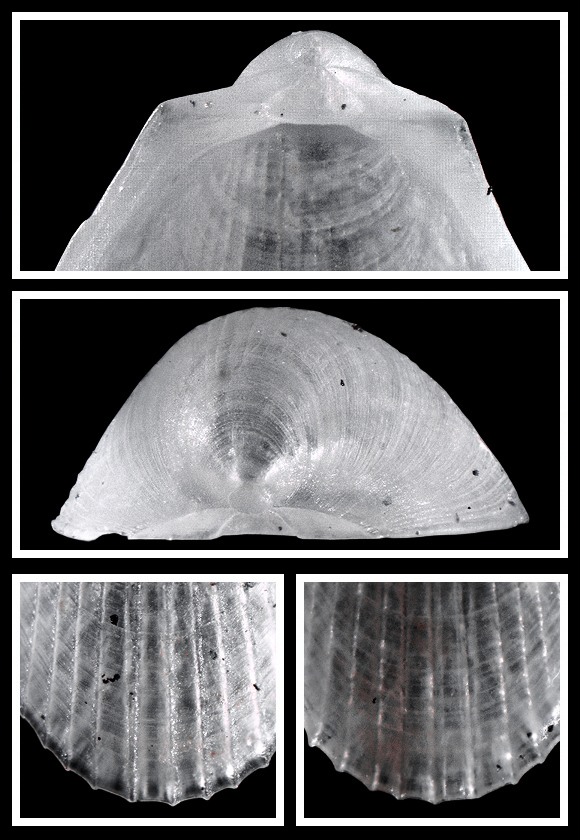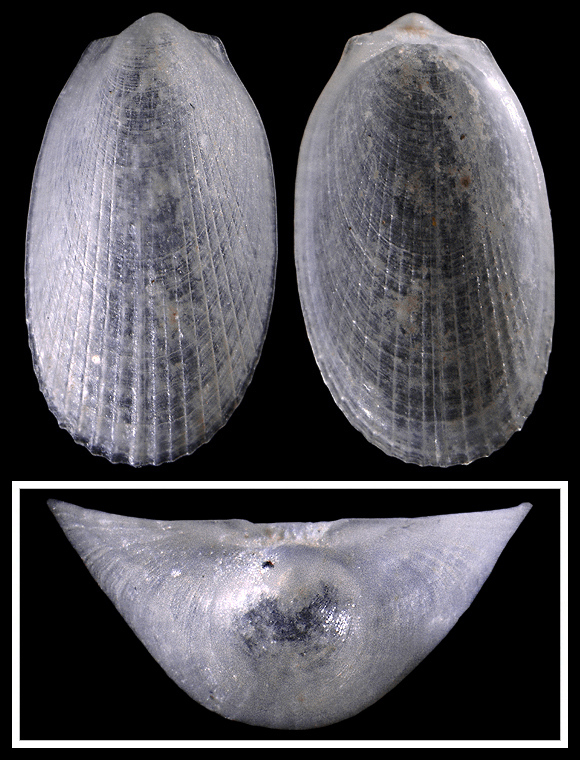
Original taxon: Pecten subauriculatus.
50m deep, Scilla, Messina Strait, SW. Italy. 2,5mm.

The median groove is a distinctive feature, noticed by the british paleontologist S. V. Wood, who wrote in 1839: « The central costae are angulated, dwingling into striae on the sides, visible internally, crenulating the margin in front. » – “Descriptions of the species of the genus Lima, from the Coraline Crag etc.” in Annals and Magazine of Natural History, vol. III, London 1839.
Intertidal, Punta del Carnero, Algeciras, Andalucia, S. Spain. 2,5mm.

Leach, about his Lima unicostata: « Shells pellucid, with vertically elevated lines; one of the middle lines is elevated and forms a rib; both valves immediately under the rib are channeled; the epidermis white. Pecten subauriculatus, Mont. Test. Brit. Supp. 63; Flem. Edinb. Encycl. vii. 98. Ostrea subauriculata, Turt. Conch. Dict. 131. This species occurs, but very rarely, in deep water in sandy bottoms. » – W. E. Leach: Molluscorum Britanniae Synopsis, London 1852, p.348.
Above and below: 55m deep, in grit, Ognina area, Catania, E. Sicilia. 3-3,1mm.
